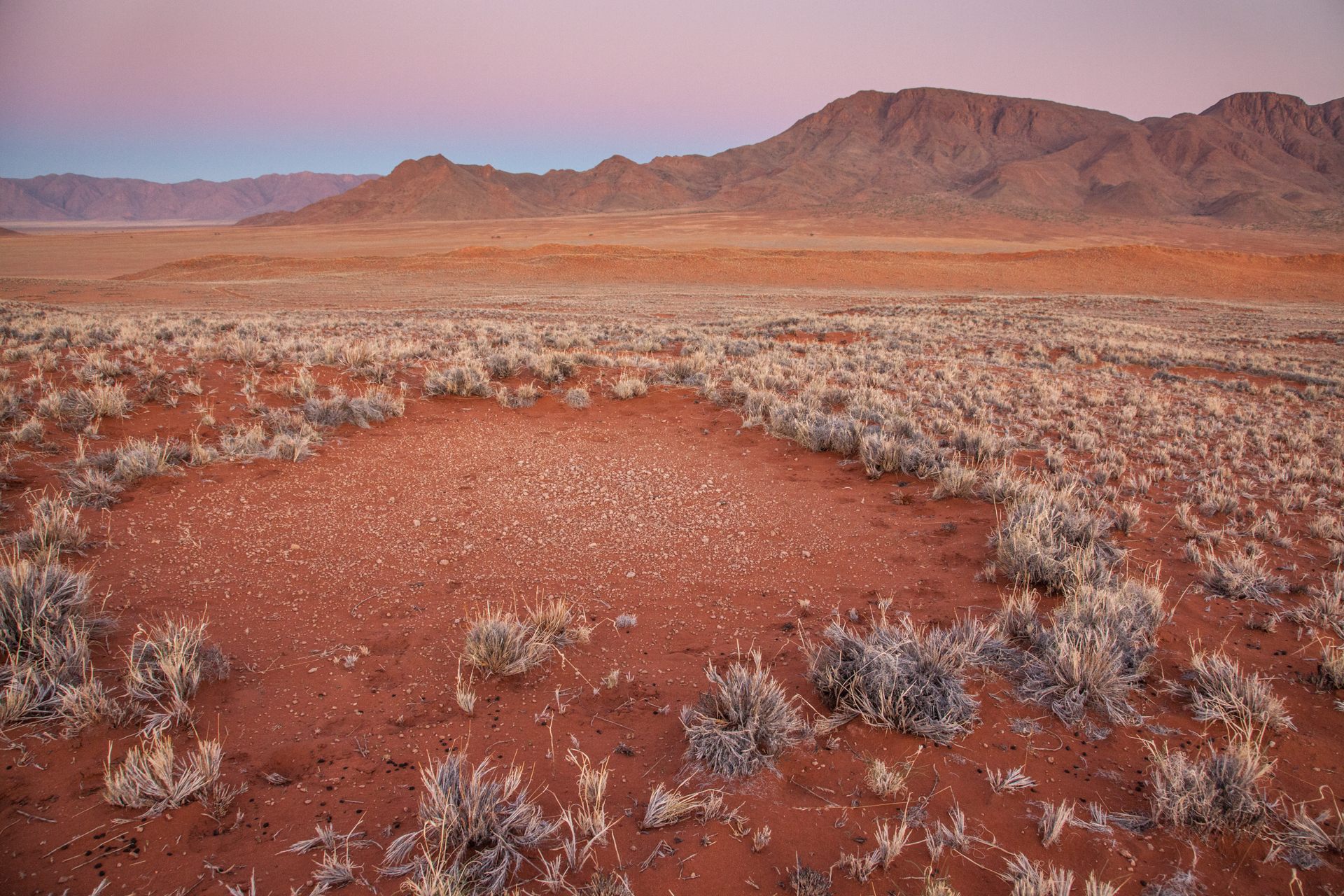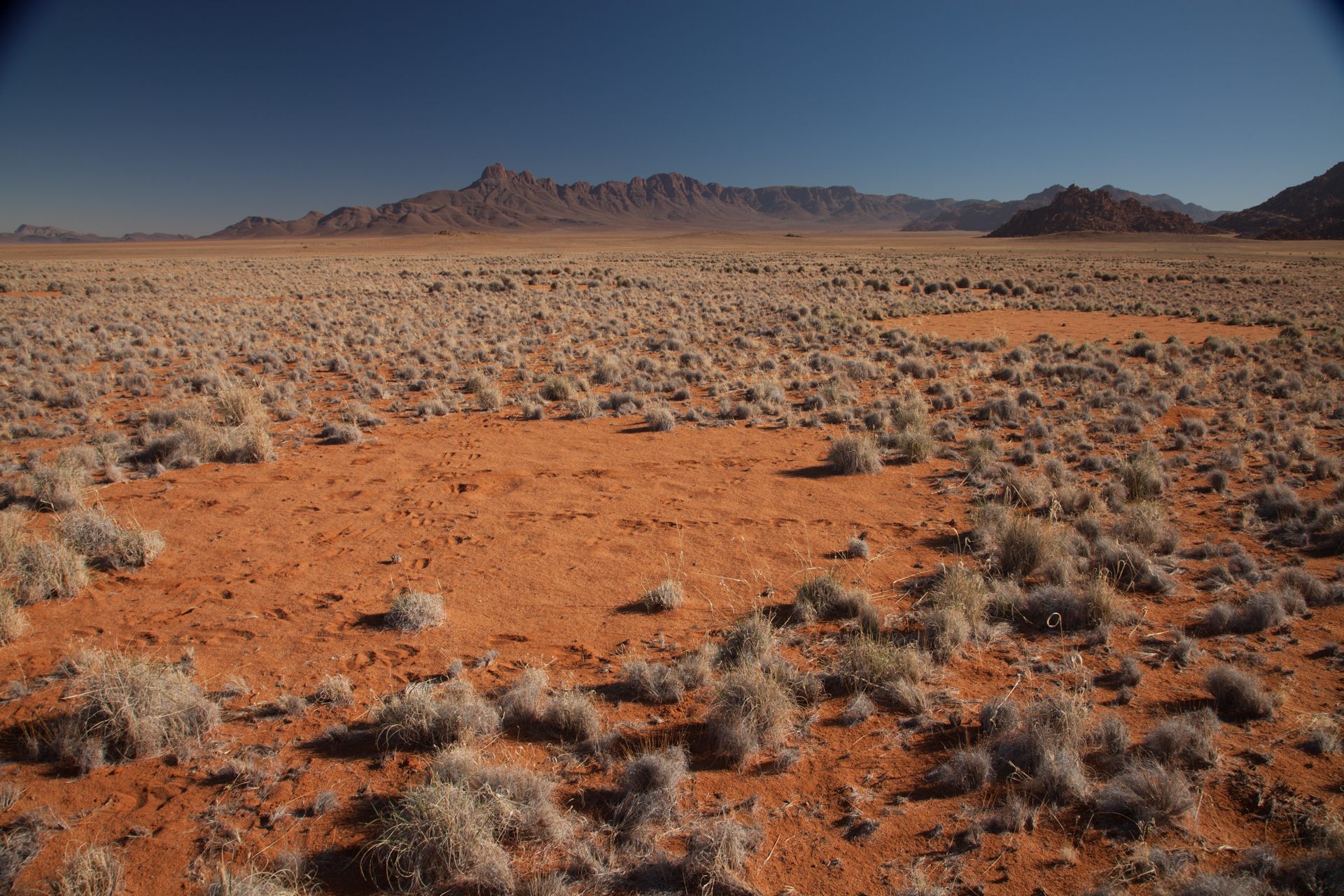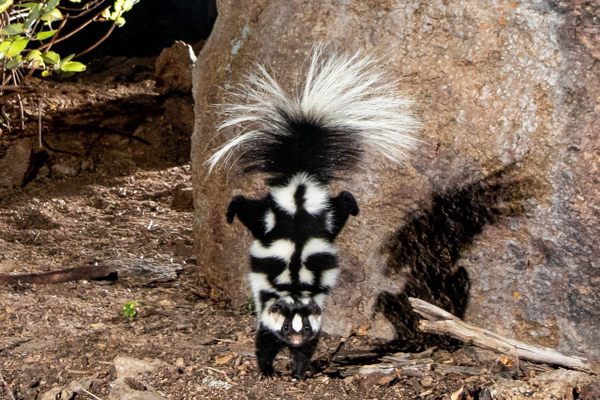Scientists Have a New Idea About the Origins of Namibia’s Fairy Circles
Two competing theories could both be true: Termites and plants both contribute to the circles’ creation.

In the Namib desert, the land is patterned with mysterious circles, arranged in a regular pattern. Across the expanse, rings of high grass cordon off empty spots of sandy orange ground. The origins of those circles have never been determined.
For years, scientists have debated the cause of these “fairy circles,” and recently a sharp divide has separated partisans of two competing theories. One gives credit for creating the circles to sand termites; the other to the plants.
Now, a new paper published in Nature suggests that both theories could be true and that the behavior of both sand termites and plants could contribute to creating the haunting pattern that has obsessed so many scientists.

Seen from above, the fairy circles dot the ground with such regularity that it’s hard to believe they’re natural. Along the circumference of the circles, the plants grow high, so that each fairy circle has a thick, fuzzy border. Scientists who ascribe to the plant theory of fairy circles think that plants competing for water self-organize into these patterns. The roots of stronger plants keep others from growing nearby, creating bare patches in the soil. Those bare patches, in turn, collect water that nourishes the stronger plants, reinforcing their dominance and sustaining the circles.
In 2013, Norbert Jürgens, a professor at the University of Hamburg, published a paper in Science, reporting that he had found sand termites living among the fairy circles. According to the termite theory, the tiny insects eat away plants to form circles of bare earth. The water collected in those circles, in this theory, benefits both the plants surrounding the bare patch, which grow high, and the termites, which need water to thrive.
Since Jürgens published his theory, a rash of reports supporting the competing plant theory have come out. Last year, scientists also published a new piece of evidence for that side of the argument, when fairy circles were found in Australia.

Before this discovery, the Namibian circles were the only example of this strange phenomenon, and the Australian circles jived with the plant theory, that the arid environment and competition among plants for water created the magical pattern. When Stephan Getzin, a lead advocate for the plant theory, studied the Australian circles, he found no evidence of termites living in the area, either. (Knowing the scrutiny their research would be under, he and the team were exacting in their search for termites, he told The New York Times.) In a paper published in the Proceedings of the National Academy of Sciences, Getzin argued that the discovery of the Australian fairy circles shored up the plant hypothesis.
Corina Tarnita, the lead author of the new Nature paper, came to fairy circles via termites. Tarnita is a mathematician who models ecological systems, and in 2015 she and a group of colleagues published a paper showing how termite behavior could interact with plants’ own organization to form patterns at different scales. Their work built on previous research by one of the collaborators, Rob Pringle, on patterns created by termites, and in the 2015 Science report they argued that such patterns could help stabilize ecosystems and resist desertification. When they read Jürgens study on a fairy circles, Tarnita and Pringle thought, “Here’s another example of what termites could do.”
As they learned more about fairy circles and the debate around the cause, the researchers thought that both sides of the argument had some plausibility to them. After all, their own work already showed how plants and insects could both contribute to forming patterns. But there had been much more mathematical work done to shore up the plant theory. “The termite theory did not have the same mathematical backing,” says Tarnita.

The new Nature paper fills that gap, but also provides a model for how two processes, termite colonization and plant self-organization, could contribute to creating the fairy circles. First, they created a model, based on termite colony dynamics, that reproduced the pattern of the Namibian fairy circles. But they also considered the possibility that the plants could be contributing simultaneously. In this model, the termites and plants interacted—termite nests create bare patches, which, under wet conditions, are filled back in by plants. When it’s dry, though, the model shows “dense, tall grass rings” growing around the patches, similar to the grass rings observed in the field.
What that means, to Tarnita, is that either plants or termites could be responsible for the large-scale pattern of fairy circles, but that it’s also possible they’re both part of the answer. “Two very different processes, coordinated by very different organisms, could lead to that exact same pattern. That’s fascinating,” she says. “The next thing, though, is we can go further than that by combining them.”
The model also produced a result that the researchers weren’t expecting, which could be a sign they’re on the right track. The model showed that wet seasons would create small, regular clumps of plants in between the fairy circles, along with larger, random clumps during wet seasons, a feature not previously documented. But when couple of the team’s collaborators went out to the desert to photograph that vegetation, they found those large clumps of grass, just as predicted by the model.

This won’t be enough to convince plant partisans that termites are causing the fairy circles. “The model’s output is in better accord with the observed patterns,” says Walter Tschinkel, a biologist at Florida State University who has studied the circles. “However, the assumptions made about the biology and behavior of the termites are completely untested. The causes of fairy circles can only be established through manipulative experiments, and these are still lacking.”
Tarnita recognizes that. “A model can never say this is exactly how it is,” she says. “A model can show you what’s possible and reveal new features, and show that combining different basic principles you get a better description of the system. But you have to test these idea with manipulative experiments in the field.”
She and her collaborators are considering options for how to take that next step. But to her what’s most exciting is what this line research indicates about how patterns might form in nature. “Patterns are much more prevalent than we would have thought 20 or 30 years ago,” she says. “There’s this wealth of simple interactions leading to emergent behavior in systems that we would not have guessed at before the advance of things like Google Earth and satellite images.”
Part of what’s fascinating to her is how different natural mechanism might create these same patterns. How many mechanisms might it take to create one pattern? How many patterns are there in nature? How many different mechanisms can lead to the same patterns? However much these dazzling designs might seem like the work of fairies or some other magic, she wants to know the natural explanation behind them.





































Follow us on Twitter to get the latest on the world's hidden wonders.
Like us on Facebook to get the latest on the world's hidden wonders.
Follow us on Twitter Like us on Facebook